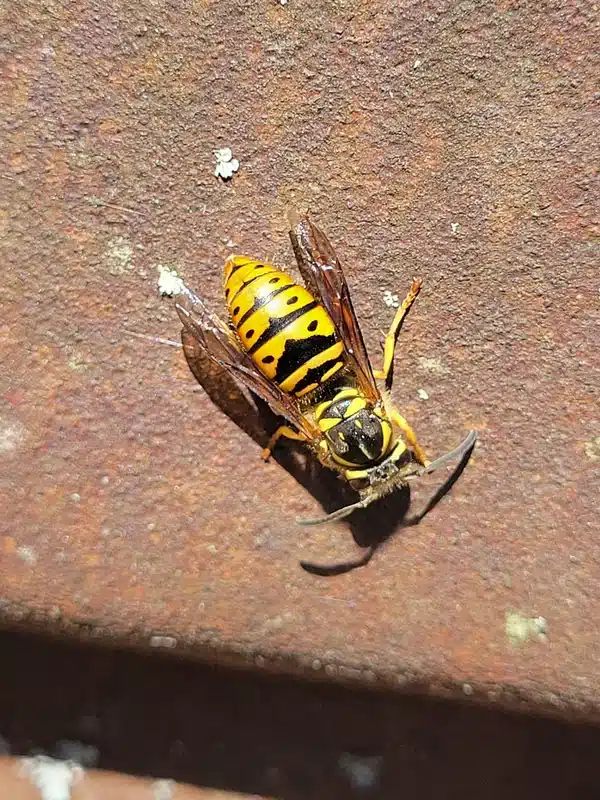When you spot a buzzing black and yellow insect near your home, figuring out if it’s a yellow jacket or hornet makes a big difference. Both can sting multiple times, but they have different habits, nest locations, and aggression levels that affect how you should handle them.
Understanding the yellow jacket vs hornet differences helps you make better decisions about removal and protection. Some build nests underground while others prefer tree branches. Some become aggressive scavengers at outdoor barbecues, while others mostly stick to hunting other insects.
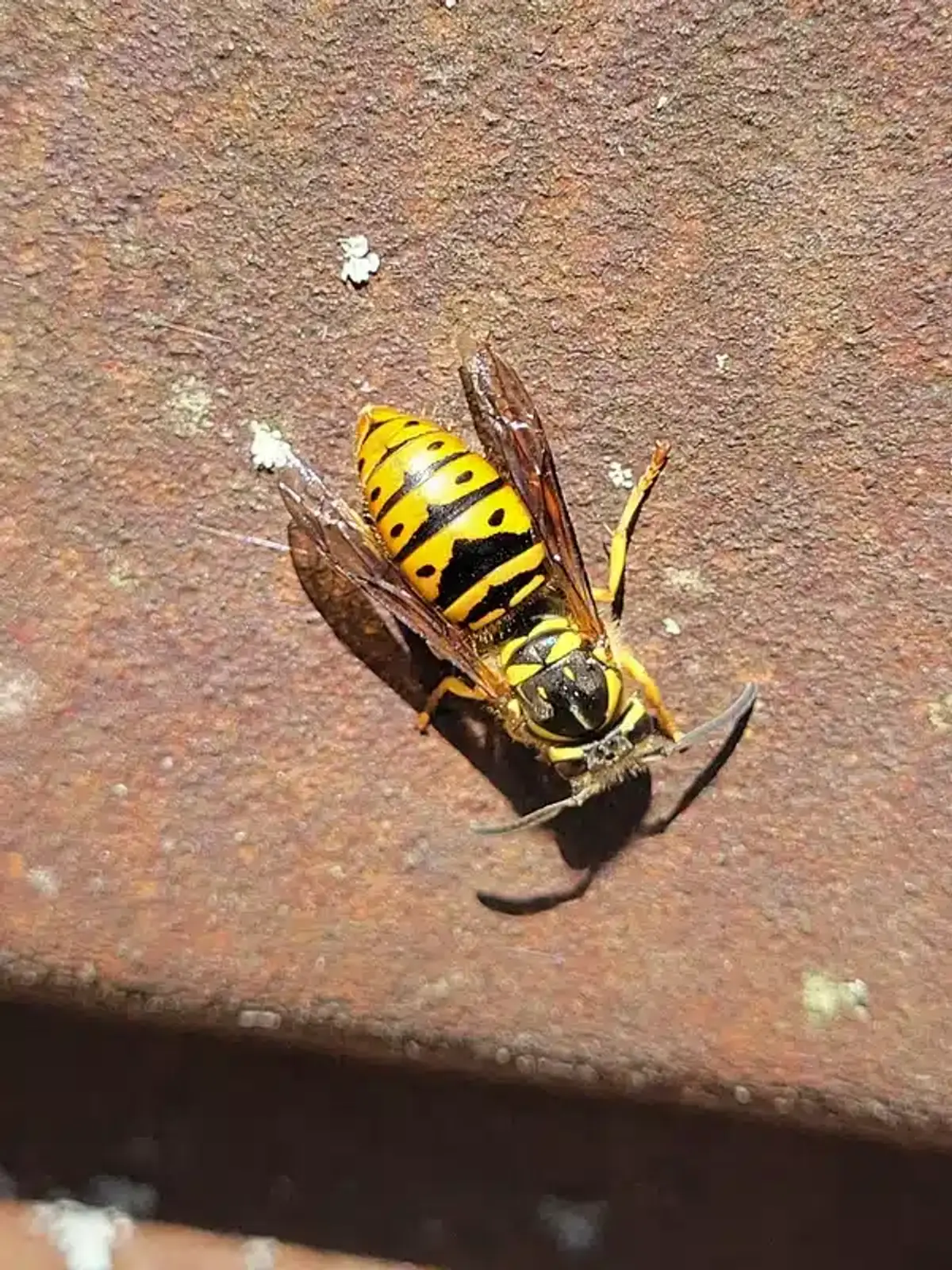
Quick Yellow Jacket vs Hornet Identification
The easiest way to tell yellow jackets from hornets is by size and color patterns. Yellow jackets measure about half an inch long with bright yellow and black stripes. Most species have distinctive anchor or spade-shaped black marks on their first body segment.
True hornets in our area are much larger. The bald-faced hornet reaches up to three-quarters of an inch and appears black with white markings instead of yellow. European hornets grow even bigger at over an inch long, displaying brown and yellow coloring rather than the typical black and yellow pattern.
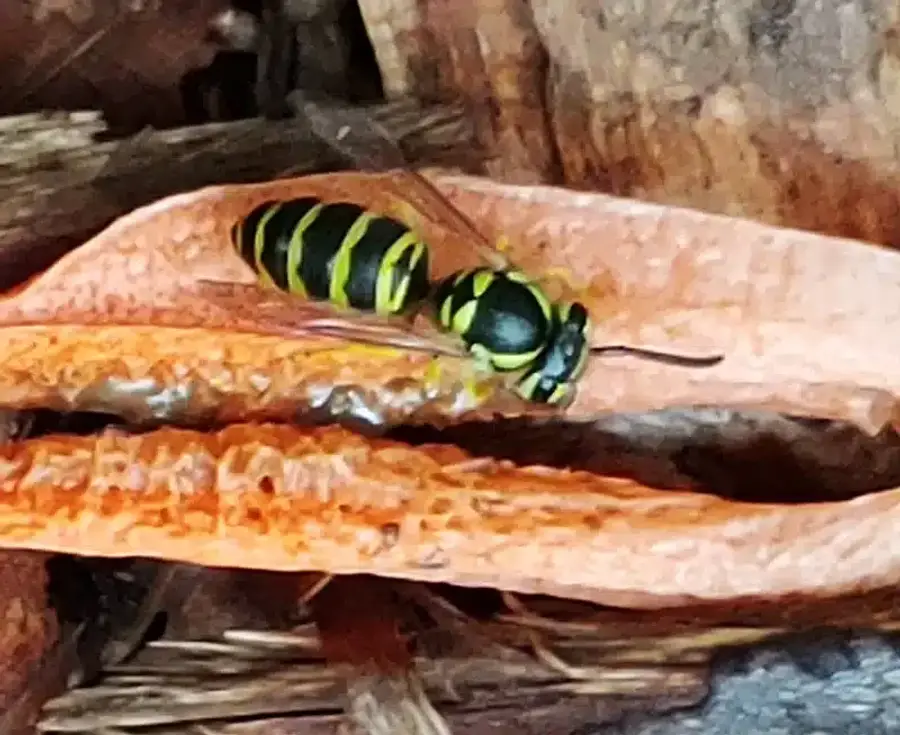
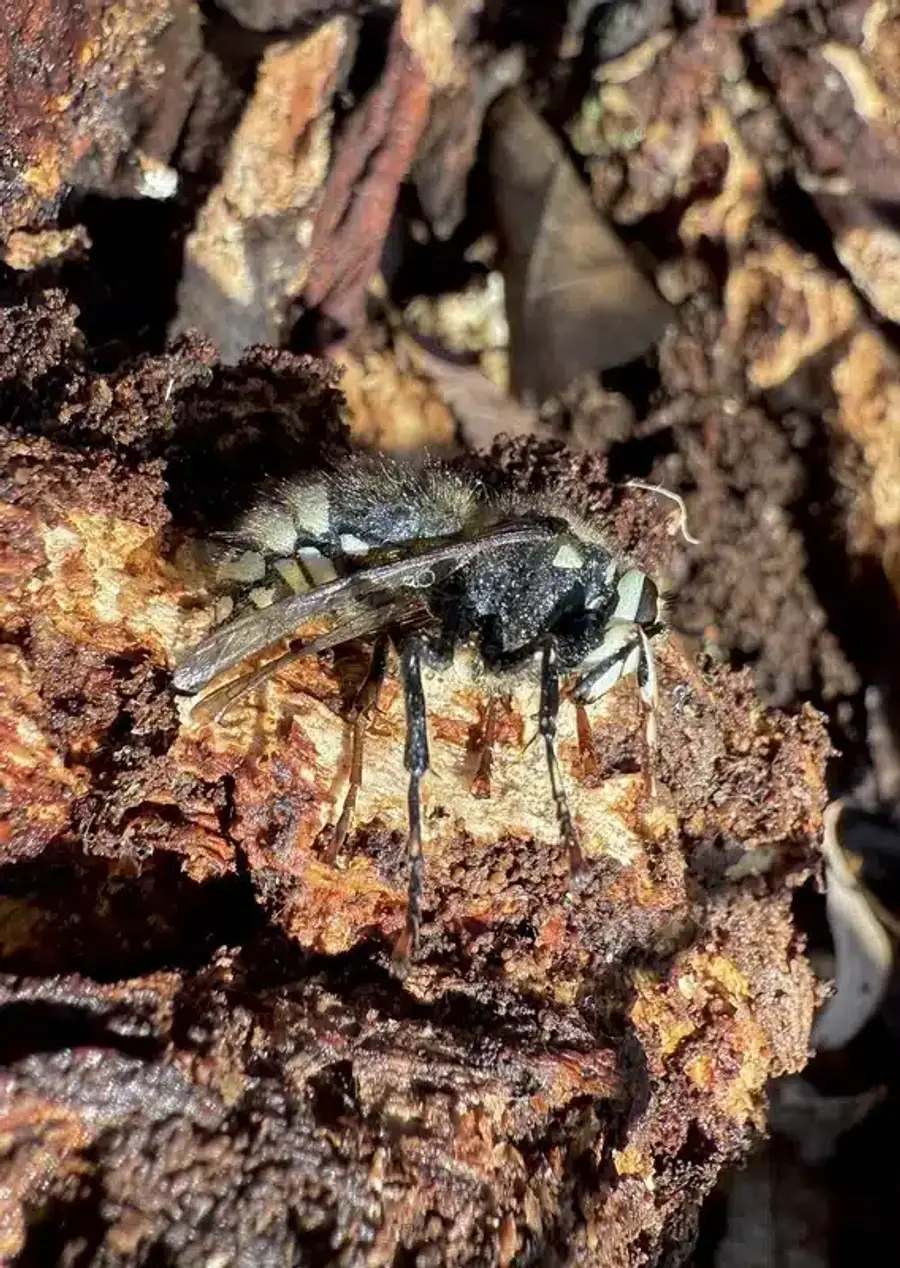
Body shape also differs between these insects. Yellow jackets have a more compact build with a defined waist. Hornets appear more robust with longer heads and broader thoraxes.
| Yellow Jackets | Hornets | |
|---|---|---|
| Size | ½ inch long | ¾ to 1+ inch long |
| Colors | Bright yellow & black | Black & white or brown & yellow |
| Nest Location | Underground or wall voids | Aerial, hanging from trees/buildings |
| Aggression | Very aggressive, scavenging | Less aggressive away from nest |
| Peak Activity | Late summer (August) | Late summer (August) |
Where Yellow Jackets and Hornets Build Their Nests
Nest location provides one of the clearest ways to distinguish yellow jacket vs hornet species. Yellow jackets typically choose ground-level sites or hidden cavities for their homes.
Yellow Jacket Nest Locations
Eastern yellow jackets prefer underground burrows, often taking over abandoned rodent holes in mulch beds or embankments. German yellow jackets frequently move into wall voids, attics, and soffits where they can expand their colonies without detection.
These ground and cavity nests can house thousands of workers by late summer, creating serious safety hazards for homeowners and residents.
Case Study: When Underground Yellow Jackets Turned a Community Path into a Danger Zone
Last fall, our team received an urgent call from an HOA where multiple residents had been stung while walking along a popular community path. What seemed like isolated incidents revealed a much larger problem lurking beneath the surface.
- The situation: Underground yellow jacket nest in high-traffic pedestrian area
- Discovery method: Multiple sting incidents led to careful daytime observation of ground activity
- Treatment approach: Targeted insecticide applications at timed intervals into the underground entrance
- Follow-up process: Returned days later to excavate the dead colony and prevent reestablishment
This case demonstrates why ground nests require immediate professional intervention - their hidden locations and aggressive defense make them extremely dangerous for the general public.
Hornet Nest Locations
Hornets build in completely different spots. Bald-faced hornets construct large, football-shaped nests hanging from tree branches, building overhangs, or tall shrubs. These aerial nests can reach the size of a basketball and house several hundred workers.
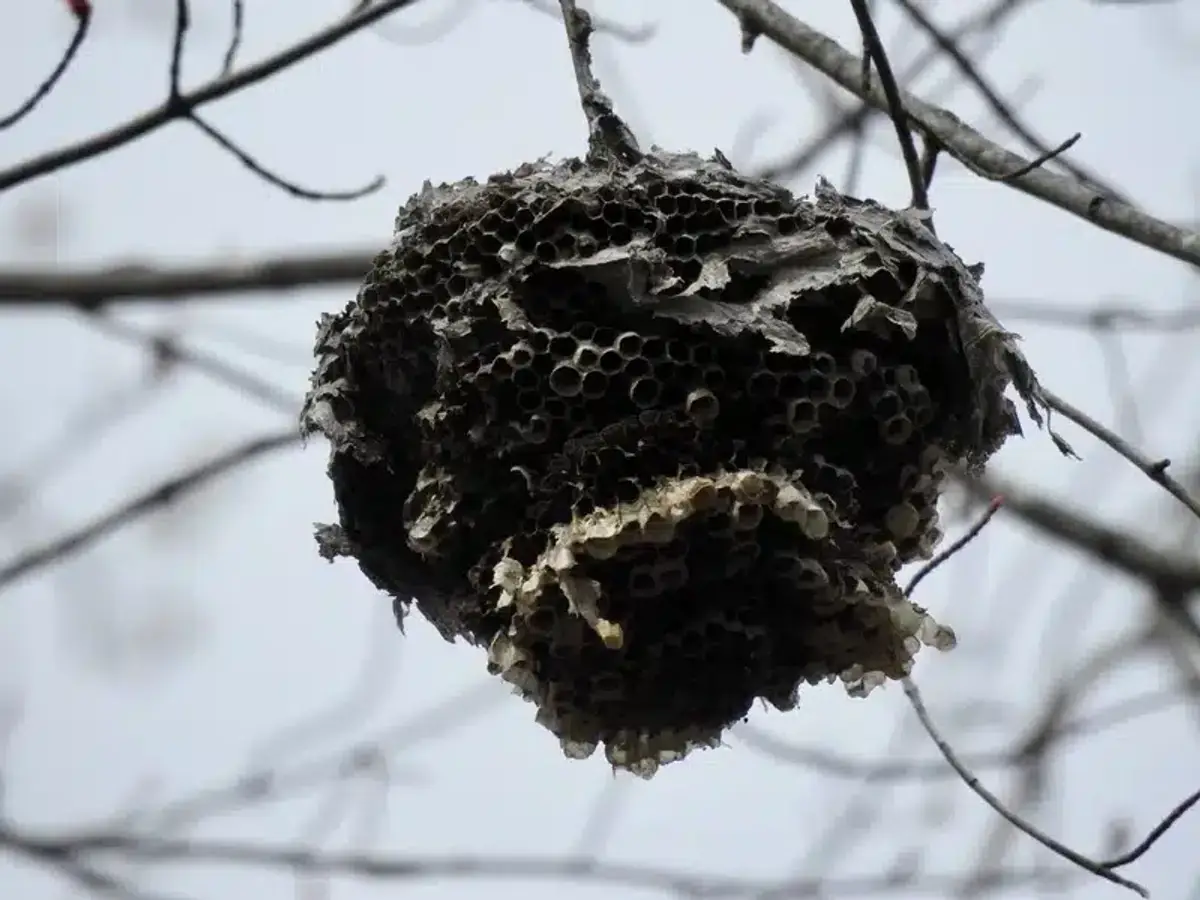
European hornets nest inside hollow trees, wall cavities, or barns. Unlike bald-faced hornets, they prefer enclosed spaces but rarely use the small ground burrows favored by yellow jackets.
Yellow Jacket vs Hornet Behavior and Aggression
The yellow jacket vs hornet aggression comparison reveals important safety considerations. Yellow jackets become increasingly aggressive throughout the season, especially near food sources.
Ground-nesting yellow jackets defend their colonies most aggressively. Disturbing a ground nest can trigger dozens of workers to attack simultaneously. They also become bold scavengers at outdoor events, attracted to sugary drinks and meat.
What does the science say?
According to Penn State Extension research, eastern yellow jackets exhibit synchronized defensive responses when their ground nests are disturbed. Studies show that chemical alarm pheromones released by guard workers can mobilize dozens of nestmates within seconds, leading to mass attacks. The research indicates that ground-dwelling colonies show significantly higher aggression levels compared to aerial species due to their vulnerability to ground vibrations and disturbances.
Bald-faced hornets are generally less aggressive when away from their nest. They focus on hunting other insects rather than scavenging human food. However, they will defend their aerial nests vigorously if threatened.
European hornets show moderate aggression levels. They hunt at night and are attracted to porch lights, which can bring them into contact with people. Their large size makes their presence more noticeable, but they’re less likely to sting unless directly handled.
Seasonal Activity Patterns
Both yellow jackets and hornets follow similar yearly cycles, but their peak activity periods differ slightly. Understanding these patterns helps predict when you’re most likely to encounter problems.
Spring brings overwintered queens out of hiding to establish new colonies. From our experience, wasp and hornet nests become extremely common during spring when pollinators are most active. Queens search for suitable nest sites and begin building small starter combs in April and May.
Summer colony growth accelerates rapidly. By July, first-generation workers take over foraging duties while queens focus on egg-laying. Nest populations explode during this period.
Late summer and early fall create the most challenging situations. August represents the peak aggression period for both yellow jackets and hornets. Colonies reach maximum size with thousands of workers competing for limited food sources. This drives them to become more aggressive and bold around human activities.
Safety Alert
August is the most dangerous month for wasp and hornet encounters. Colonies are at peak size with thousands of aggressive workers. Avoid outdoor activities near potential nest sites and never attempt DIY removal during this period.
Diet and Foraging Habits
The yellow jacket vs hornet diet comparison shows both similarities and important differences. Early in the season, both insects focus primarily on protein sources to feed developing larvae.
Yellow jackets hunt flies, caterpillars, and other soft-bodied insects. As summer progresses, they switch increasingly to carbohydrate sources like nectar, tree sap, and fallen fruit. This dietary shift drives their scavenging behavior at picnics and outdoor dining areas.
Bald-faced hornets remain more focused on hunting throughout the season. A single large colony can remove thousands of flies weekly from the surrounding area. They also prey on other yellow jackets and wasps.
What does the science say?
Research from Penn State documents that bald-faced hornets are highly effective biological control agents. Field studies show a single mature colony containing 400-700 workers can capture and consume up to 5,000 flies per week during peak season. Their hunting efficiency makes them valuable for controlling pest fly populations, though their aggressive nest defense behavior requires careful management around human activities.
European hornets hunt both day and night, making them unique among local species. They damage fruit crops by girdling bark and chewing ripe apples or peaches. Their nighttime activity around lights distinguishes them from other hornets.
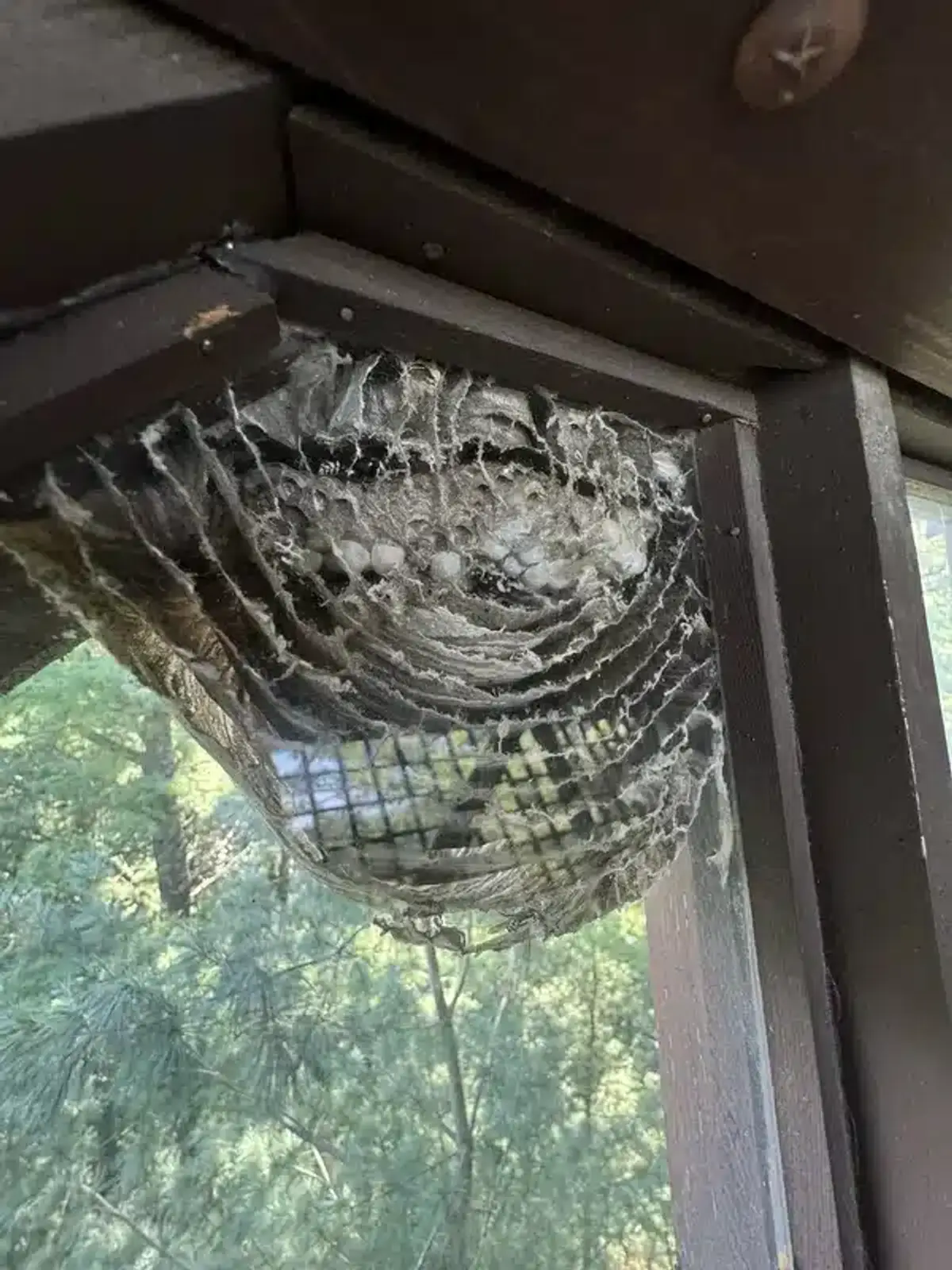
Health and Sting Concerns
Both yellow jackets and hornets can sting repeatedly since they have smooth stingers that don’t get stuck in skin. Sting severity depends more on the number of stings and individual sensitivity than the specific insect type.
Yellow jacket stings inject venom containing phospholipase A and other compounds that cause localized pain and swelling. Multiple stings increase the total venom dose and reaction severity.
Hornet stings deliver similar venom compounds but in larger quantities due to their bigger size. European hornet stings are particularly painful because of their larger venom sacs.
Approximately 3% of adults show sensitivity to wasp and hornet venom. Anyone with previous allergic reactions should carry epinephrine and seek immediate medical attention after any sting.
What does the science say?
According to the CDC’s guidance on stinging insects, hymenoptera venom (wasps, hornets, and bees) causes more deaths than any other venomous animal in the United States. Clinical studies show that systemic allergic reactions occur in 0.4-3% of the population, with anaphylaxis representing the most severe response. The CDC emphasizes that even individuals without known allergies can develop severe reactions to multiple stings due to venom toxicity rather than allergic sensitization.
Emergency Response
Multiple stings can be life-threatening even without allergies. If stung more than 10 times, or if experiencing difficulty breathing, swelling of face/throat, or rapid pulse, seek emergency medical care immediately.
Yellow Jacket and Hornet Nest Removal Strategies
Yellow jacket vs hornet removal requires different approaches based on nest location and species behavior. As registered technicians, we often use protective equipment when approaching these nests because they can be extremely dangerous.
Ground Nest Treatment
Ground yellow jacket nests need careful treatment timing. We mark the entrance during daylight hours, then apply residual insecticide dust at night when workers are inside. University of Minnesota Extension recommends avoiding direct flashlight illumination of the entrance to prevent triggering defensive responses.
Never plug a ground nest entrance before the colony dies completely. Survivors may chew through building materials to escape, potentially entering living spaces.
Aerial Nest Treatment
Bald-faced hornet nests require different tactics. We use directed aerosol applications into the bottom entrance after dusk when flight activity stops. Multiple treatments may be necessary for large colonies.

Yellow Jacket Wall Void and Attic Nest Treatment
German yellow jacket colonies in wall voids present the biggest challenges. Aerosol treatments can drive insects into living spaces, so we prefer dust applications through access panels when possible.
These structural nests often require professional intervention because of their hidden locations and potential for large populations. If you’re unsure about any nest location or size, it’s always best to contact a pest control company for removal.
Prevention and Property Protection
Preventing yellow jacket vs hornet problems starts with eliminating attractive conditions around your property. Both insects look for food sources, nest sites, and water during their active season.
Essential Prevention Steps
- Seal Entry Points: Fill foundation gaps smaller than ¼ inch to prevent ground-nesting species from accessing crawl spaces
- Screen Vulnerable Areas: Install fine mesh screens over soffit and attic vents to block German yellow jacket access
- Food Source Management: Use tight-fitting lids on trash cans and clean up fallen fruit promptly
- Lighting Control: Use motion-activated lights instead of constant illumination to reduce European hornet attraction
- Professional Consultation: Schedule spring inspections before colonies establish to identify potential nesting sites
These proactive measures significantly reduce the likelihood of late-season scavenging behavior and nest establishment near your home.
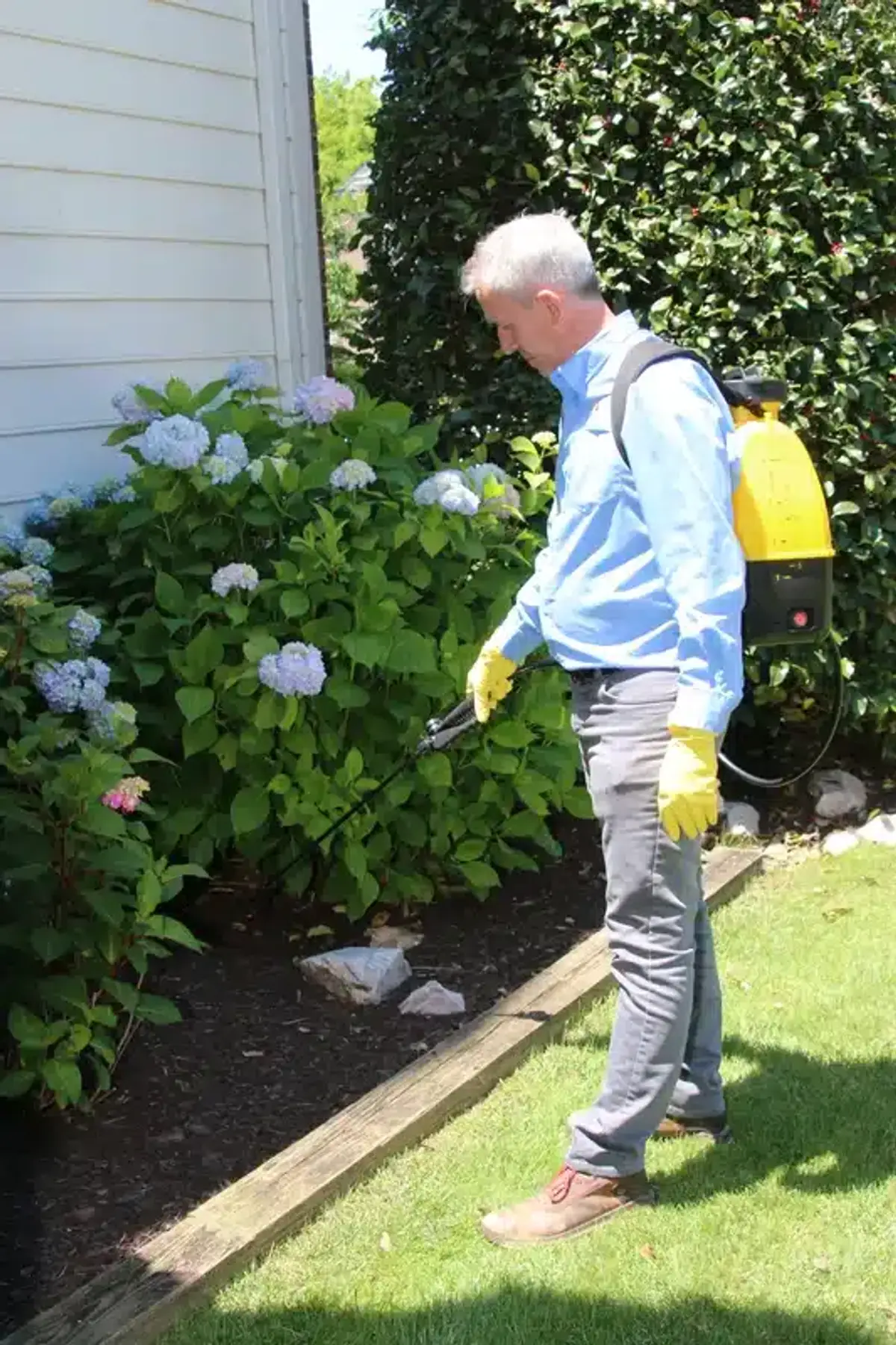
Reduce night lighting to discourage European hornets, which are strongly attracted to illuminated areas. Motion-activated lights work better than constant illumination for both security and pest prevention.
When to Call for Professional Wasp Nest Removal
Several situations make professional wasp nest removal the right choice. Large colonies, nests near high-traffic areas, or previous allergic reactions all warrant expert intervention.
Ground nests present particular risks because they’re easy to step on accidentally. Wall void colonies can house thousands of workers in hidden locations where DIY treatments often fail.
Our 57 years of family ownership and operation have taught us that yellow jacket vs hornet identification helps determine the best removal strategy. We use targeted approaches based on species behavior and nest location rather than one-size-fits-all treatments.
If you discover any stinging insect nest on your property, especially during peak aggression periods in August, professional removal prevents both immediate sting risks and future reestablishment problems. Our team has the protective equipment and experience needed to handle these situations effectively.
Understanding the differences between yellow jackets and hornets helps you make informed decisions about your property’s pest management. Whether you’re dealing with aggressive ground-nesters or large aerial colonies, professional identification and treatment ensure both immediate protection and long-term prevention.
If you’re unsure about any stinging insect nest on your property, don’t take chances. Call us at 703-683-2000 for expert identification and removal services, or email us at info@bettertermite.com to discuss your specific situation with our licensed technicians.
Frequently Asked Questions
What's the main difference between yellow jackets and hornets?
+
The main differences are size and coloring. Yellow jackets are smaller (about ½ inch) with bright yellow and black stripes, while hornets are larger with different color patterns - bald-faced hornets are black and white, and European hornets are brown and yellow. Nest locations also differ significantly between species.
Are yellow jackets more aggressive than hornets?
+
Yellow jackets, especially ground-nesting species, tend to be more aggressive than most hornets. They become bold scavengers around food and defend their nests aggressively. Bald-faced hornets are generally less aggressive when away from their nest, though they'll defend their aerial nests vigorously if threatened.
Where do yellow jackets typically build their nests?
+
Yellow jackets prefer ground-level locations like abandoned rodent burrows, mulch beds, or wall voids and attics. Eastern yellow jackets usually nest underground, while German yellow jackets often choose structural voids in buildings where they can expand their colonies without detection.
How can I tell if it's a hornet nest or yellow jacket nest?
+
Hornet nests are typically aerial - bald-faced hornets build large, football-shaped paper nests hanging from tree branches or building overhangs. Yellow jacket nests are usually hidden underground or in wall cavities. If you see a large papery nest hanging in the open, it's likely a hornet nest.
When are yellow jackets and hornets most active?
+
Both are most active and aggressive in late summer, particularly August, when colonies reach peak size. Spring activity begins in April-May when queens emerge to start new colonies. They become increasingly noticeable through summer as worker populations grow.
Should I remove a yellow jacket or hornet nest myself?
+
Professional removal is recommended for most situations, especially ground nests, large colonies, or nests near high-traffic areas. These insects can be extremely dangerous when their nests are disturbed, and improper treatment can drive them into living spaces or cause massive defensive responses.
Do yellow jackets and hornets die in winter?
+
Yes, frost kills entire colonies except for mated queens who overwinter under logs, siding, or other protected areas. Only the queens survive to start new colonies the following spring. German yellow jackets occasionally survive winter in heated wall voids.
What attracts yellow jackets to my property?
+
Yellow jackets are attracted to protein sources early in the season (other insects) and switch to sugary substances later - including fallen fruit, sugary drinks, and food at outdoor gatherings. They're also drawn to trash cans with food waste and pet food left outside.
With five years of hands-on experience in the pest control industry, George Schulz is a registered technician with the Virginia Pest Management Association and a proud third-generation professional in a family business that's been protecting homes for over 57 years. He manages and trains a team of service pros while also leading internal research efforts—recently spearheading a deep-dive review of thousands of documents on pest control materials to hand-pick the most kid and pet friendly, most effective solutions tailored specifically for homes in the DC metro area.
